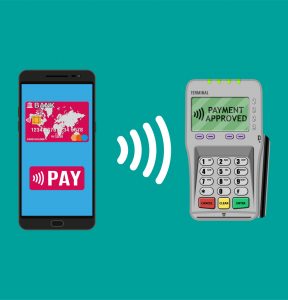
Consumers and retail staff both win from mobile POS solutions, as the staff is able to manage high traffic situations with ease, while shoppers are treated to a better, customized in-store experience.
In a highly competitive industry where consumers are becoming increasingly empowered, brick-and-mortar retailers can gain a significant edge through mobile point-of-sale (mPOS). Many retailers, however, are lagging behind with implementing such solutions in their physical locations. And those who have taken this leap often struggle to implement mPOS technologies within their existing POS infrastructure and related systems.
With so much data and technology available at our fingertips, this allows retailers to make better-informed decisions and update their operations. And the rise of e-commerce consumers also influences a constant demand among shoppers for next-level in-store retail experiences. This means leveraging agile, mobile technology with real-time data insights to make the shopper experience as seamless as possible.
See also: More Than Personal: Customer Experiences in the Post-Digital Age
It takes a true mobile expert to design and execute a plan that incorporates the full range of technology solutions needed to enhance employee productivity, optimize the customer experience and increase sales. Having real-time insights can help improve operations tenfold, particularly with the inclusion of mobile devices in retail. Here are a few ways that the combination of real-time data and mPOS can help improve retail operations.
Customer Challenges
The complexity of the digital transformation calls for solutions that can meet retailers’ most important challenges. How to meet the changing needs of consumers and improve employee operations is especially top of mind. Data can be factored in, both externally and internally, to see how consumers prefer to shop. In return, discovering such insights will guide retailers with how to make stores operate at a higher level. This can range from seeing customer preferences and retail history from the second they walk in the store, to seeing how store inventory changes over the course of a day.
Leveraging mobile devices gives store associates the power to handle their tasks on the go, anytime anywhere as they’re more knowledgeable and empowered with the combination of mobile tech and data. In the long run, this only improves the shopping journey for the customer.
Mobile insights
Understanding which mix of mPOS solutions is right for your business requires dedicated mobile expertise that retailers may lack in house. So, too, does building, staging, kitting, configuring and shipping devices to multiple store locations in a timely manner.
Each use case will be far different, so you must be sure to invest in a bespoke package that fits your specific needs. Certain retailers may need more rugged devices capable of a multitude of extreme environments. From the hot heat of a kitchen to a warehouse environment, each mobile device must be outfitted for that particular environment. This means, having waterproof/drop-proof enclosures for devices capable of many different situations.
Line-busting
Consumers are less patient today than ever before. Making them wait in long checkout lines is a perfect recipe for losing sales. By arming store associates with devices like payment sleds, scanners, and tablets, you can help them bust the line to save the sale. Data can show store associates what times specific locations typically have the highest foot traffic. From important days during the holiday season to peak weekend store traffic, these insights coupled with agile, mobile tech can free up lines and keep consumers shopping smoothly.
Consumers and retail staff both win from these solutions, as the staff is able to manage high traffic situations with ease, while shoppers are treated to a better in-store experience. In a day and age when consumers are increasingly looking to shop online, anything brick, and mortar stores can do to increase the in-store experience is vital. The mix of mPOS and real-time data insights can help to propel retailers to keep shoppers happy.
Security threats
Looking beyond the benefits of mPOS, retailers’ mobile solutions must feature end-to-end encryption and be PCI- and EMV-compliant so they will meet all necessary security standards and guard against chargeback liability. Customer purchasing data must also be protected at every point of sale. With the arrival of 5G, data speeds are becoming increasingly faster.
While this helps to aid the flow of information, it can also increase cyber-attacks. Retailers must be sure to equip their mobile devices with security measures to secure all company and shopper data. This can include multi-authentication features or apps built to lock or wipe data in the case of compromised or stolen devices. mPOS can help to streamline all operations, but only if retailers secure their information.
Future-proofing
According to Ingenico Group, “Payment standards and mechanisms are constantly evolving — consider the upcoming EMV liability shift in the U.S. It’s important you choose a solution that can handle alternative forms of payment that the consumer wants, including near field communication (NFC), Europa-Mastercard-Visa (EMV), mobile wallets, and whatever comes next.” This makes updating your mPOS with the most up to date payment methods top of mind.
Retail must embrace a switch to consumer-facing policies. Shoppers may want to pay via their phone with a QR code or use a contactless card. If your mPOS doesn’t allow for these types of payments, you may risk losing a sale. Futureproofing your devices can help to prepare your brand for the changing payments and retail ecosystem.
Support
In today’s retail landscape, mPOS solutions are critical to both operational efficiency and customer satisfaction. Keeping your devices up and running requires that your retail associates have access to specialized, responsive support when and where they need it. This means having a detailed program in place to keep devices running smoothly. Critical devices like mPOS cannot afford to be out of commission for long.
With the addition of real-time data, retailers can see how devices are performing in the field. From battery usage to tracking app updates, data can give decision-makers the insights to make informed decisions on their devices. This includes full lifecycle management of devices to ensure that at the end of a device’s lifecycle, it is decommissioned properly.
High employee turnover
For brick-and-mortar retailers, having a high concentration of part-time staff that churns requires considerable resources dedicated to training, compliance, reporting and asset management. Investing in a specialized mobile support program frees precious resources, reduces your risk of productivity loss and improves ROI.
It is clear that retailers have many tools at their disposal to increase their operations and in turn, improve the customer experience. Mobile devices are the vehicle for this digital transformation, while real-time data insights drive informed retailer decisions. Now more than ever, it has become necessary to meet the changing needs of a growing consumer base. The retailers that leverage tools will be best suited to meet consumer needs moving forward, while those who stick with antiquated operations will suffer a bleak fate.



























